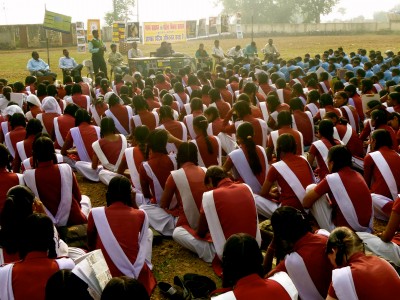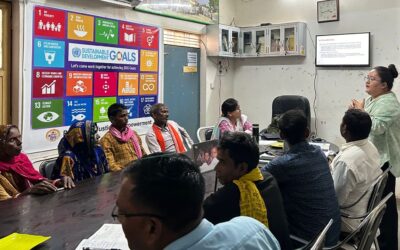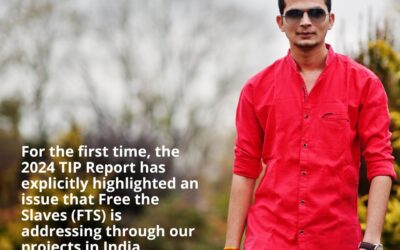Trickery cuts a wide swath in India’s impoverished communities. People often leave home in search of work, and many find themselves being trafficked instead.
FTS frontline partner MSEMVS aims to change that. And young people are at the heart of the strategy. The goal of the Trafficking Prevention Plan is to stop migration from becoming a road to slavery.
To do that, MSEMVS targets schools in some of India’s most vulnerable villages. Using case studies, posters and pamphlets, they teach students about the risks of migration and the realities of human trafficking.
With millions of people on the move worldwide, it’s easy for traffickers to pose as legitimate labor recruiters. Students are now being taught the warning signs so they won’t fall victim when they grow up.
 The events are organized as mass meetings, with 250 to 300 students per site. To make the lesson stick, the approach is interactive. It’s not a lecture. Students discuss ways that they can become agents of change in their own communities.
The events are organized as mass meetings, with 250 to 300 students per site. To make the lesson stick, the approach is interactive. It’s not a lecture. Students discuss ways that they can become agents of change in their own communities.
Organizers provide a telephone hotline number and leave a “Report Box” at schools for anonymous tip-offs about suspicious activities that might be related to trafficking.
It’s working. At one location, students provided more than 30 tips for community organizers to investigate.
This educational initiative is one reason that more and more people are escaping slavery at farms, brick kilns, brothels and factories. MSEMVS reports that in 2012 they helped nearly 800 people move from slavery to freedom.
Learn more about our India program on the FTS website.



